While several people are coming out with wonderful solutions to help societies, the real impact can happen only if there is convergence of solutions through collaborative efforts of several stake holders.
This article attempts to aggregate various challenges faced and solutions sought by governments and societies.
Some of the focus sectors are:
- Water
- Environment
- Infrastructure
- Energy
- Waste Management
- Security
- Health care
Some of the important challenges:
Air pollution: 13 of the top 20 polluted cities are in India. Air pollution slashes life expectancy. Air quality monitoring, Air quality assessment, air quality modelling and forecasting, noise and traffic modelling and forecasting are some of the interesting challenges that need to be taken up. Solutions that provide real time air quality information, location specific pollution concentration and the related sources in the background that are the possible causes, providing alert when there is deterioration of air quality, remote analysis of air quality collecting data from various sources are several other topics of interest.
Noise Pollution:Measurements of urban noise, impact of noise in the surroundings, noise due to traffic are immediately required.
Rivers Polluted: The Ganga and Yamuna are ranked among the world’s 10 most polluted rivers. Water quality monitoring, water quality assessment, water quality modelling and forecasting are a few challenges immediately need to be solved. Parameters like-Dissolved oxygen, pH levels, turbidity, total suspended solids, pH levels, chlorine, Total organic carbon etc. are to be measured regularly. Accommodating multiple sensors and transmitting data will be required. Various sources that can be considered are: dams, rivers, ground water, tanks and canals and desalination.
In addition, water treatment plants, reservoirs, distribution of water in urban and local bodies and waste water management are some additional spots where solutions will be required.
Summary dash boards with drill down facility location wise, quality and quantity wise must be provided.
Predictive water quality analysis and alerts based on the organisations interests are another important topic.
Flood prediction and assessment: collection of data like soil texture, land cover and topographical data to generate simulations, Assessing hydrological impact of urbanisation spatially, calculation of additional runoff and loss of ground water recharge, identification of problem zones in urban areas, assessing the impact, web visualisation flood predictions are the need of the hour.
Rise in temperatures: Reduction of green belts and real estate increase have raised the temperatures.
Ground water recharge: Reduction of green cover has brought down shrinking of rechargeable areas.
Infrastructure Management: Infrastructure quality monitoring, infrastructure assessment, infrastructure modelling and forecasting. Several tasks like monitoring conditions of buildings, bridges, roads and large infrastructure assets and offering asset management and maintenance services.
Waste management: Waste to energy technologies, waste water treatment, waste segregation services. The solutions should collect from sources, transport waste, do composting and materials recovery, provide safe disposal of inert and hazardous materials. In addition solutions for waste to energy conversion, waste to impactful things making would help. Waste water treatment is another important task.
Land use & Urban planning: Building information systems, land use assessment, urban planning and urban heat modelling, resource consumption assessment. Movement of people and detection of bottle necks, pedestrian movements, drivers, cyclists, maintenance staff, provide heat and acoustic maps for urban spaces and buildings, provide visualisation of the structures in detail with overall and individual views of a structure, visual updating and monitoring of the deadlines during the construction. Model use of land, modeling the use over a time period, model growth patterns for population and habitation, Provide support for urban planning- analyse sources of urban heat , trapping radiation between buildings, lack of vegetation. Assess impact on human health, transportation systems and energy consumption, provide real time evaluation and warning systems.
Smart solutions to enhance energy efficiency of buildings: window films to increase natural indoor lighting, energy less skylight redistribution, energy management software, smart lighting, Biometric RFID based Access Control
Water pipeline maintenance: Coating to improve the life of existing pipes, coating can also fix broken or cracked pipe sections, reduction in costs and collateral damage to infrastructure.
Tracking buried assets: Should map drainage pathways, identify blockages, and monitor water levels
Energy: Energy distribution systems modelling, energy consumption analysis, thermal energy system modelling, battery management systems.
Analyse energy technology systems to provide advice to decision makers regarding energy planning policies, builds forecast with multiple objectives: cost, energy consumption, resource consumption, emissions etc, life cycle analysis of industry.
Optimisation of thermal energy systems, identify areas of thermal energy wastage, assess excess energy opportunities, district heating and cooling and economic modelling.
Energy mapping: Energy production, consumption and distribution. Determine energy demand, installed and potential energy production, types of energy (wind, coal, solar etc), sectors using energy (commercial , industry, transportation etc.)
Improve energy storation: hybrid buses and cars, railway transport, aerospace and marine applications
Smart Mobility & ICT: Smart Parking, CCTV monitoring & Facial Recognition, health care, data aggregation and analytics, traffic monitoring and real time diversion of traffic.
Public transport system: Automated fare collection and revenue management system, video surveillance system, automatic GPS based vehicle location systems, POS for smart cards. Establishing command control centres. E-tolling stations, automatic vehicle classification, lane detection, automated vehicle tracking systems, speed limit control system, alcohol monitoring for drivers, report vehicles to police database.
CCTV monitoring: Automated Number Plate Recognition System, Face Recognition
Real Time Public Notification: Variable Message Signage: Contextual and Variable Message signage that can offer the following information on a real time basis to citizens travelling on roadways and public areas: congestion update, crime update, event update, weather update, direction signage
Smart Parking and Parking Solutions: Smart parking for on street and off street locations, solutions for identification, reservation and payment for parking services, complete engagement from contractors to attenders, parking management, boom barrier, solution to track and manage parking.
Connected Health care: Smart health solutions like remote health monitoring devices and mobile applications, wearables that track and manage vital health statistics and activity of the user, personalised health care and remote diagnostics.

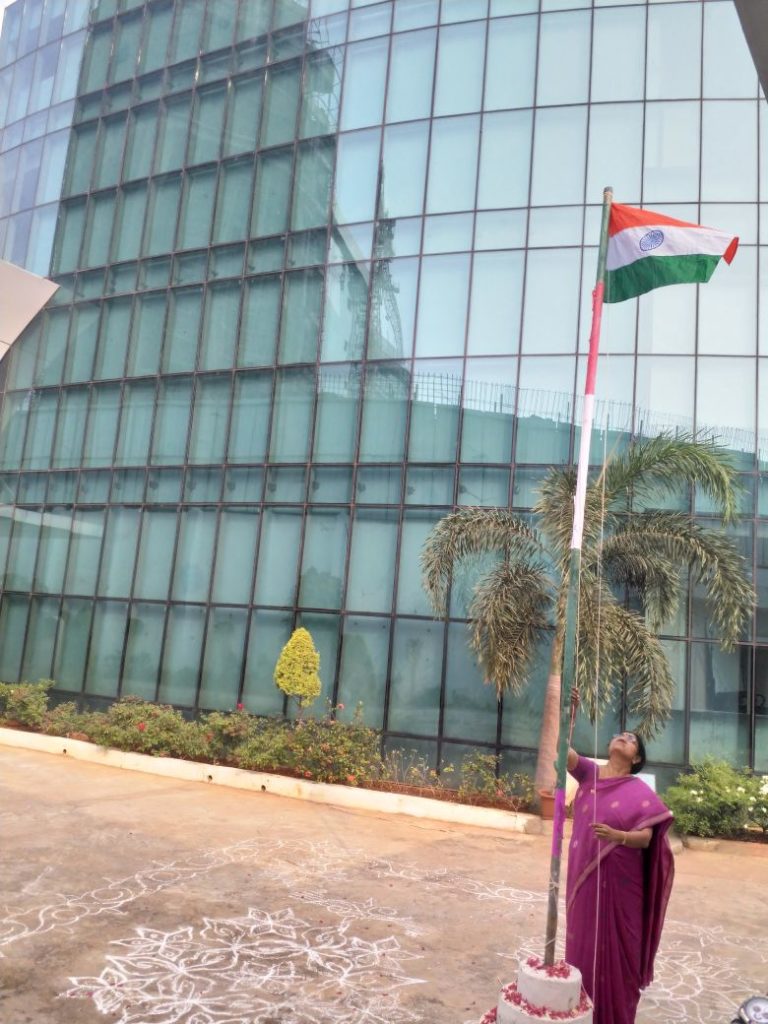

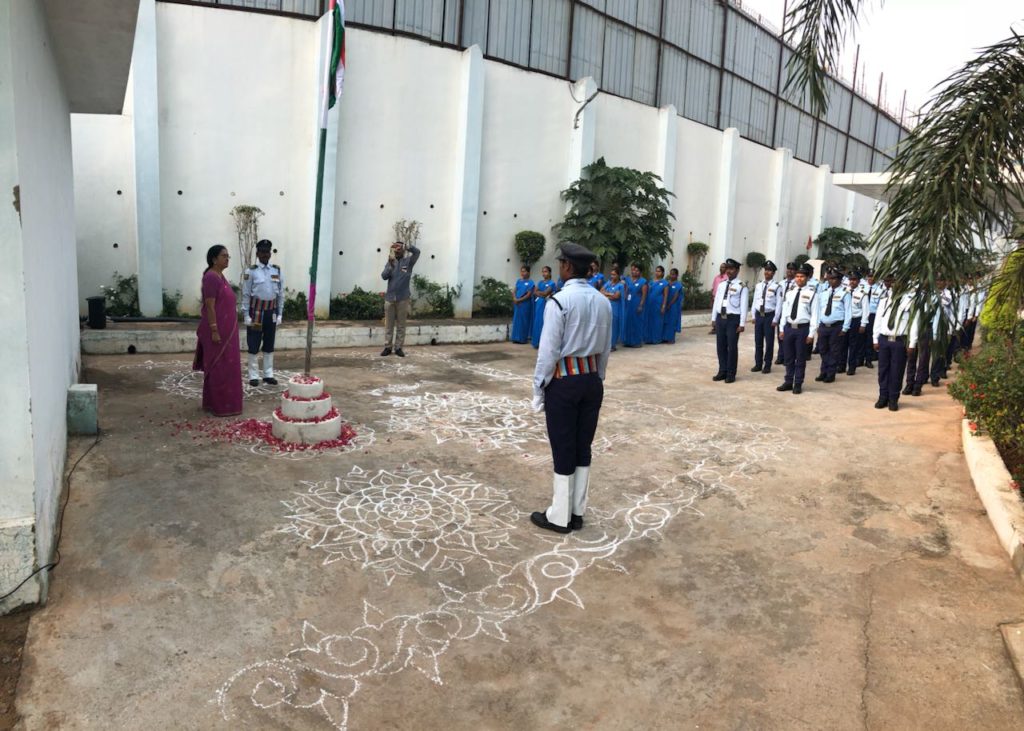
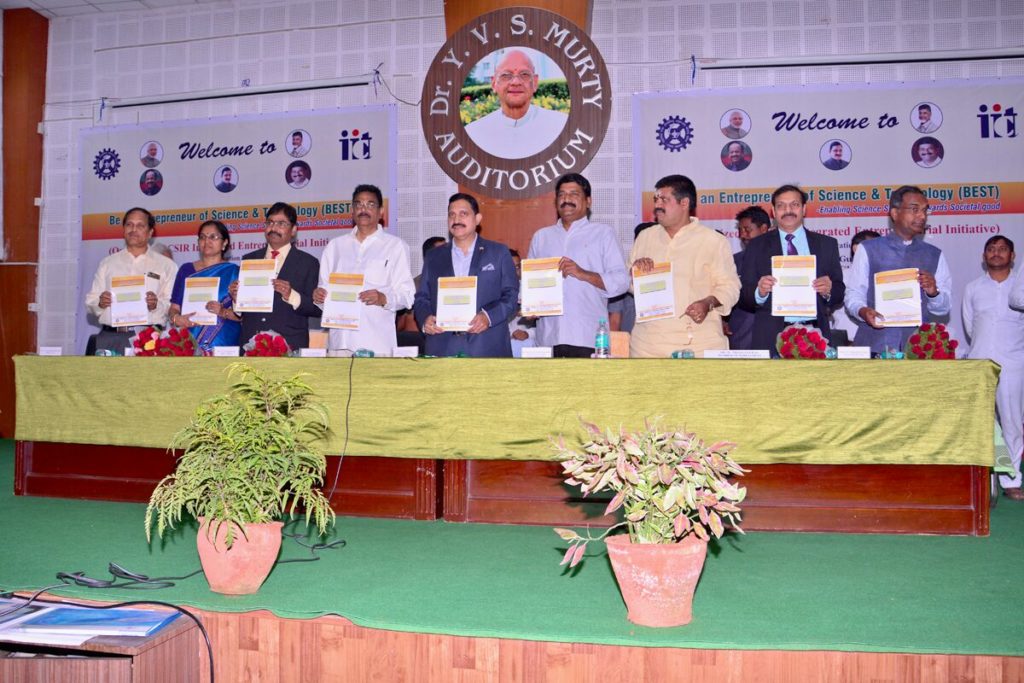
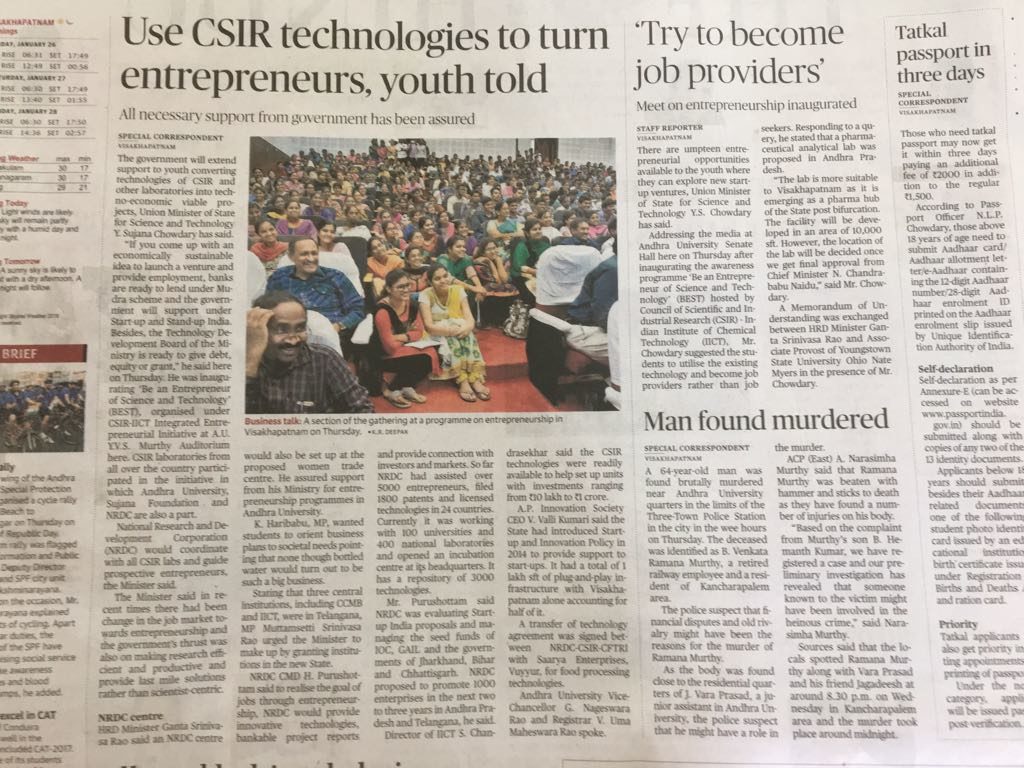
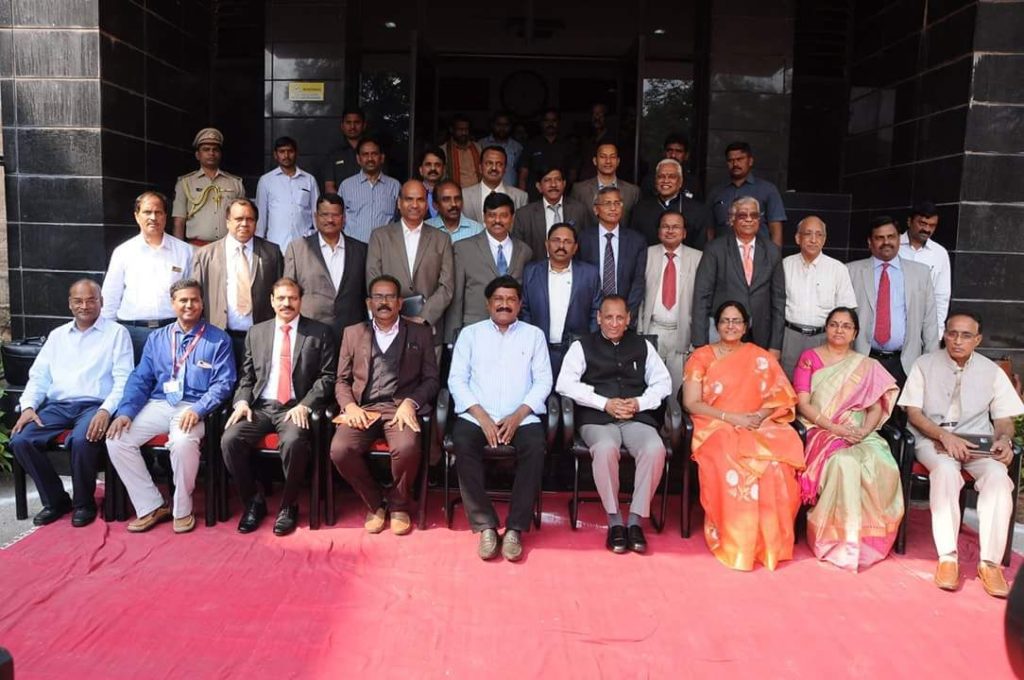
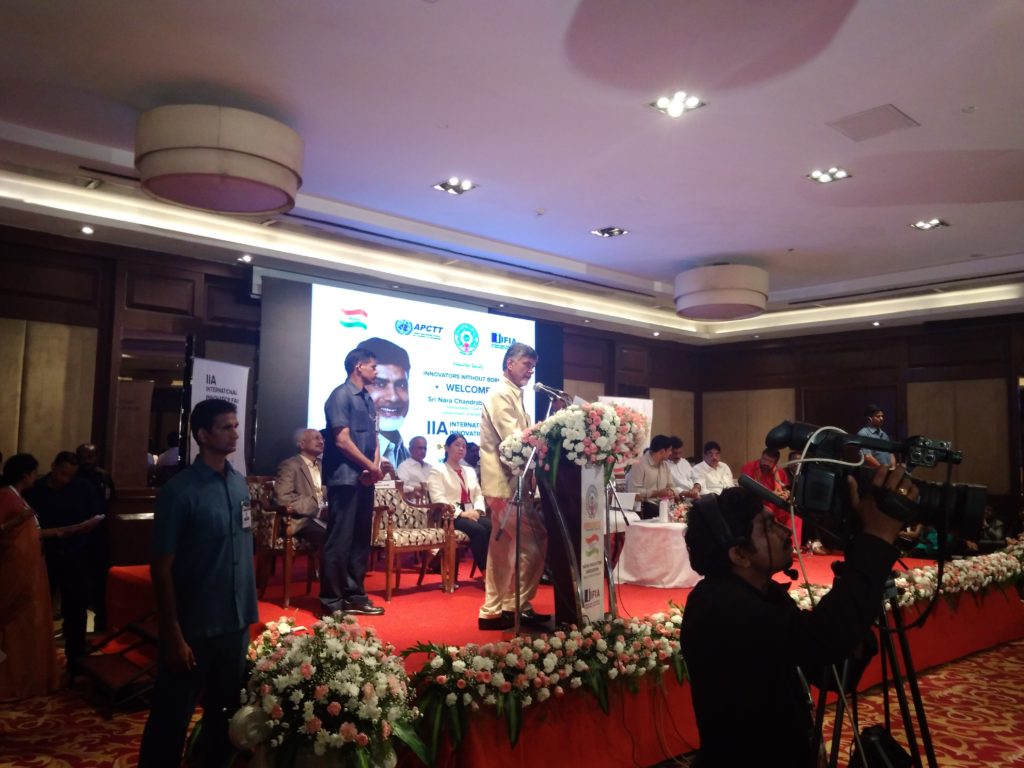
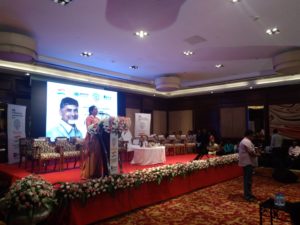
 The event was inaugurated by IFIA President, Alireza Rastegar. He also released the NCSTC magazine containing articles published by young scientists.
The event was inaugurated by IFIA President, Alireza Rastegar. He also released the NCSTC magazine containing articles published by young scientists.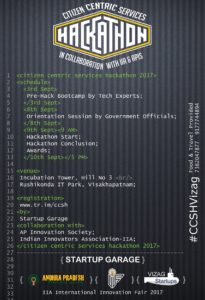 Around 600 registrations were done, of which 300 were filtered for hackathon from around 40 colleges. District Collector, Sri Praveen Kumar was kind enough to grace the inaugural. Jury from NIC and ITAAP helped in judging the best solutions. The local Vizag startups community partnered with us to conduct the event.
Around 600 registrations were done, of which 300 were filtered for hackathon from around 40 colleges. District Collector, Sri Praveen Kumar was kind enough to grace the inaugural. Jury from NIC and ITAAP helped in judging the best solutions. The local Vizag startups community partnered with us to conduct the event.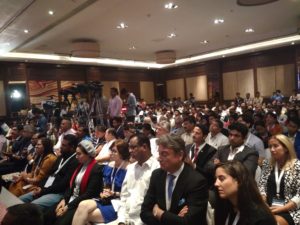 There were around 200 participants from educational institutions, research and development institutions, small and medium enterprises, grass root innovators and entrepreneurs. This workshop also had international participants including senior representatives from APCTT’s partner, organisations in India, Indonesia, Islamic Republic of Iran, Kazakhstan countries in Middle-East, Europe and Philippines. The aim is to boost awareness on the support mechanisms available for innovative entrepreneurs and share finest practices in cross border technology transfer from countries in the Asia Pacific region and beyond. It also focused on opportunities and challenges for technology commercialization, effective management of intellectual property rights, establishing and sustaining cross-border cooperation on technology transfer and sharing policy frameworks for technology transfer and innovation led entrepreneurship.
There were around 200 participants from educational institutions, research and development institutions, small and medium enterprises, grass root innovators and entrepreneurs. This workshop also had international participants including senior representatives from APCTT’s partner, organisations in India, Indonesia, Islamic Republic of Iran, Kazakhstan countries in Middle-East, Europe and Philippines. The aim is to boost awareness on the support mechanisms available for innovative entrepreneurs and share finest practices in cross border technology transfer from countries in the Asia Pacific region and beyond. It also focused on opportunities and challenges for technology commercialization, effective management of intellectual property rights, establishing and sustaining cross-border cooperation on technology transfer and sharing policy frameworks for technology transfer and innovation led entrepreneurship.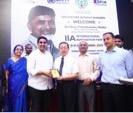 Minister for ITE&C , Mr Nara Lokesh released the Inaugural issue of International Technology Bazar along with catalogue of the fair, on 9th evening.
Minister for ITE&C , Mr Nara Lokesh released the Inaugural issue of International Technology Bazar along with catalogue of the fair, on 9th evening.